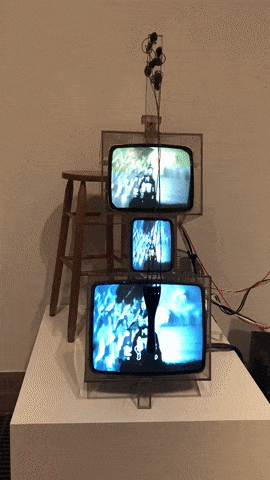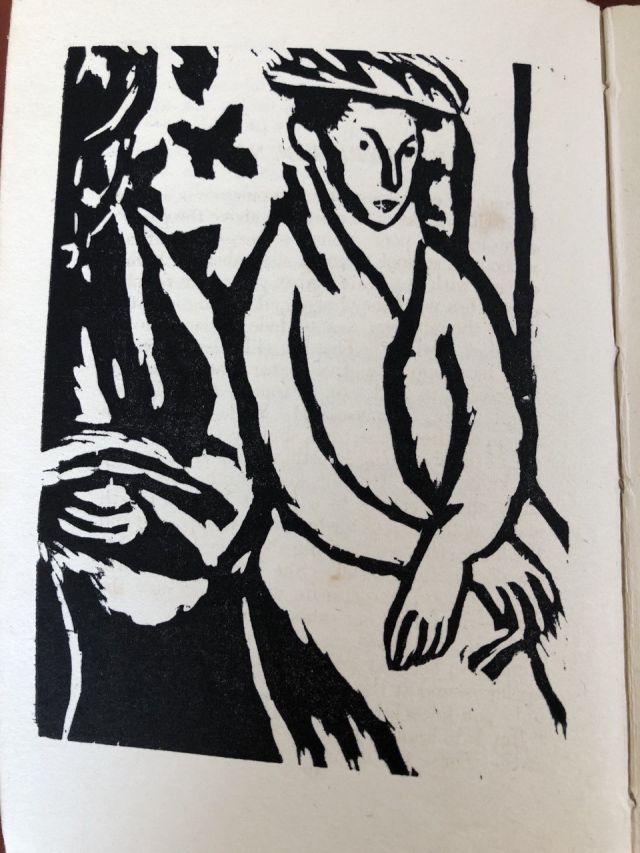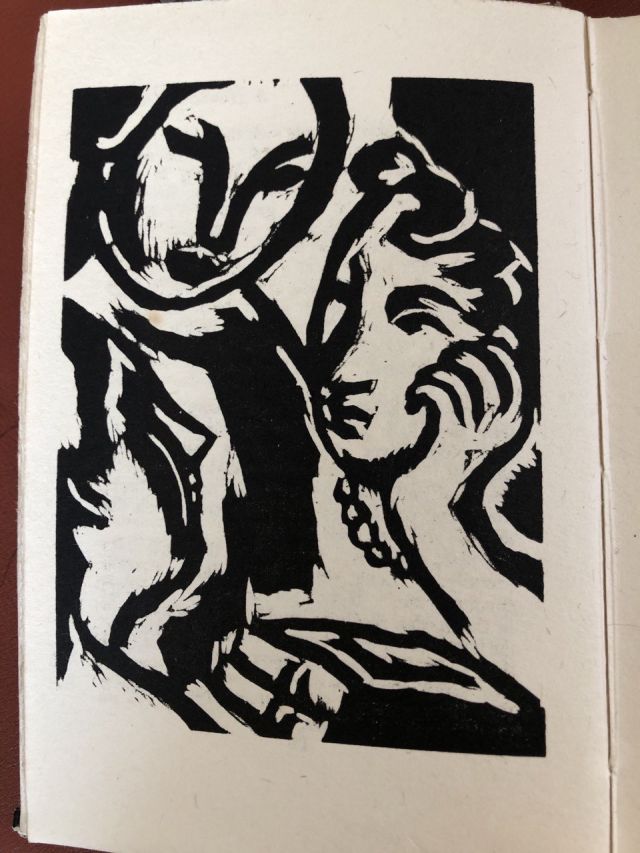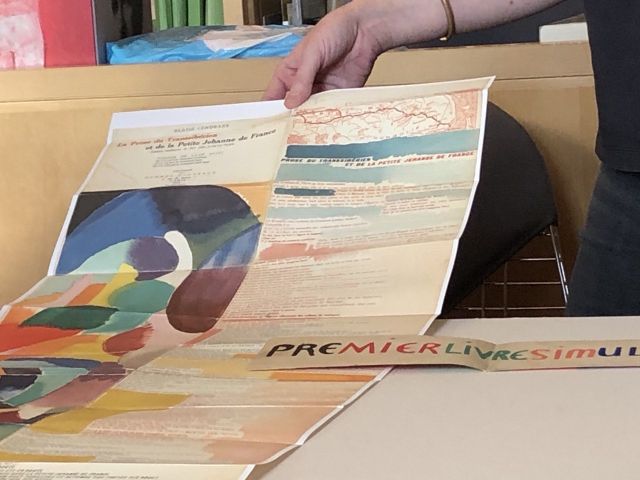#feministfriday episode 287 | Visually soothing
Good afternoon everyone,
As you know, my Fem Fri go-to in stressful times is loads of nice pictures, and today is no exception. These include some cool art by women from the Modernist workshop I went to! I'm not done with Modernism and I hope Modernism is not done with me.
Let's start, though, with the more postmodern Charlotte Moorman, cellist, artist and Miss Little Rock 1952. Here's a gif of a video of a cello playing a video of her playing that cello:

Here's a bit more about Charlotte Moorman and her way of working:
Fluxus artists with whom Moorman collaborated, for example, wrote instructional works that allowed for anyone to be the executor of the artwork or that required audience participation to be realized. This is not to say, however, that an investment in single authorship ceased to exist. The fact that Moorman’s instrumental role in many of Nam June Paik’s works has been largely overlooked or trivialized in histories of the period is a testament to the persistent valorization of single authorship in art historical discourses.
https://incidentalnoyes.com/2016/02/10/five-questions-with-the-author-corinne-granof-and/
Now let's enjoy some wood cuts from Virginia Woolf's also astonishingly talented sister, Vanessa Bell. These are to illustrate Virginia Woolf's story, Monday or Tuesday:


More on Vanessa Bell:
Blurring fine art and applied arts, Bell was also an innovator in the realm of design. With Fry and Grant (her longtime partner and the father of her daughter, Angelica), she co-directed Omega Workshops. Their modernist products ranged from furniture to stained glass and mosaics, as well as textiles, which Bell patterned in vibrant hues that revealed her distaste for restrained Victorian designs. In 1915, she began to incorporate these fabrics into popular dress designs.
https://www.artsy.net/article/artsy-editorial-meet-vanessa-bell-virginia-woolfs-overlooked-artist-sister
Finally, look at this incredible work by Sonia Delaunay, illustrating a poem by Blaise Cendrars (Prose on the Trans-Siberian Railway):


Here, just as Cendrars experimented with achieving a sense of motion in his writing, Delaunay explored the simulation of movement through the juxtaposition of contrasting colours and dynamic shapes in her contribution. In this way Delaunay’s artwork was not an illustration of Cendrars’s narrative, but a visual equivalent, intended to be seen in unison. She transcribed the poem in colours, as she heard it being read out:
The Simultanism of this book is in its simultaneous rather than illustrative presentation. The simultaneous contrast of colours and the text form depths and movements which are the new inspiration.
https://www.tate.org.uk/art/artworks/delaunay-prose-on-the-trans-siberian-railway-and-of-little-jehanne-of-france-p07355
Stay safe, friends.
A xx.